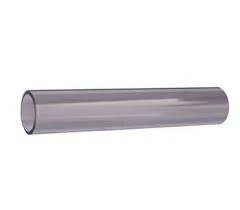dec . 11, 2024 10:32 Back to list
Understanding HDPE Pipe Electrofusion Welding Techniques for Reliable Connections
Understanding HDPE Pipe Electrofusion Welding A Comprehensive Guide
High-Density Polyethylene (HDPE) pipes have become increasingly popular in various industries due to their robustness, resistance to chemicals, and longevity. A critical aspect of the installation of HDPE pipes involves the process of electrofusion welding. This method ensures that the joints between pipes and fittings are both strong and reliable, essential for maintaining the integrity of the entire piping system.
What is Electrofusion Welding?
Electrofusion welding is a process used to join two components of HDPE by melting their surfaces through the application of electrical heat. This method employs specially designed fittings that have integrated heating elements. When an electric current is passed through these fittings, the heat generated causes the surfaces of the adjoining HDPE pipes to melt and fuse together. Once cooled, the resulting joint is as strong, if not stronger, than the pipe itself, creating a secure and leak-proof connection.
The Electrofusion Process
The electrofusion process can be broken down into several key steps
1. Preparation The ends of the HDPE pipes to be joined must be prepared properly. This involves cleaning them to remove any dirt, dust, or oxidation that could interfere with the welding process. Any rough edges should also be smoothed out, as this will enhance the quality of the weld.
2. Alignment The prepared pipes are aligned with the electrofusion fitting. Correct alignment is crucial to ensure an effective joint and to avoid stress concentrations that could lead to failure.
3. Welding Once aligned, the fitting is connected to a power source. The current passes through the heating elements in the fitting, ensuring uniform heating. The temperature must reach the melting point of HDPE—approximately 220 °C (428 °F)—to ensure a proper bond is formed.
4. Cooling After the heating cycle is complete, the electrical current is turned off, and the joint is allowed to cool. This cooling phase is critical, as it solidifies the weld, creating a strong bond.
5. Inspection Finally, the welded joint should be inspected. Common inspection methods include visual checks and performing non-destructive testing to ensure the joint’s integrity and that the weld meets industry standards.
Advantages of Electrofusion Welding
hdpe pipe electrofusion welding

The electrofusion welding of HDPE pipes offers several advantages
- Strength and Durability The joints created through this method are exceptionally strong and durable, ensuring a long service life for the piping system.
- Integrity Electrofusion welding produces a uniform and homogeneous joint, significantly reducing the risk of leaks compared to other methods.
- Resistance to Environmental Factors HDPE is inherently resistant to corrosion, chemicals, and UV radiation, making it suitable for a wide range of applications, including water supply, gas distribution, and wastewater management.
- Flexibility Electrofusion welding can be performed in confined spaces and on various pipe diameters, providing versatility in different installation scenarios.
Challenges and Precautions
While electrofusion welding has numerous advantages, it is important to be aware of potential challenges and necessary precautions
- Skill Requirement This welding method requires trained personnel. Following the manufacturer’s instructions and safety guidelines is crucial to ensure the quality of the weld and the safety of workers.
- Equipment Properly calibrated electrofusion welding equipment is essential. Regular maintenance and checks will help in avoiding any issues that could lead to ineffective welding.
- Environmental Conditions External factors such as temperature and humidity can affect the process. It is advisable to carry out welding operations within recommended environmental conditions to achieve the best results.
Conclusion
Electrofusion welding of HDPE pipes is a highly effective method that ensures strong, reliable joints necessary for various applications. The process, while requiring skill and proper equipment, offers significant advantages over traditional welding methods. As industries continue to embrace HDPE for its numerous benefits, understanding and utilizing electrofusion welding will remain a critical component of successful piping installations. As technology advances, it is expected that electrofusion techniques will evolve, further enhancing their efficiency and effectiveness in joining HDPE pipes.
-
High-Quality PVC Rigid Sheet (Glossy Surface) for Industrial Use
NewsJul.26,2025
-
High Quality PVC Rigid Sheet (Embossed Surface) for Industrial Use
NewsJul.25,2025
-
High Quality PVC Soft Sheet for Flexible Applications | Durable & Customizable
NewsJul.24,2025
-
High-Quality UPVC Water Supply Pipe for Durable Plumbing Solutions
NewsJul.23,2025
-
High-Quality PVC-M Water Supply Pipe for Reliable Plumbing Solutions
NewsJul.22,2025
-
High-Quality PVC Transparent Pipe with Clear Visibility & Durability
NewsJul.22,2025

